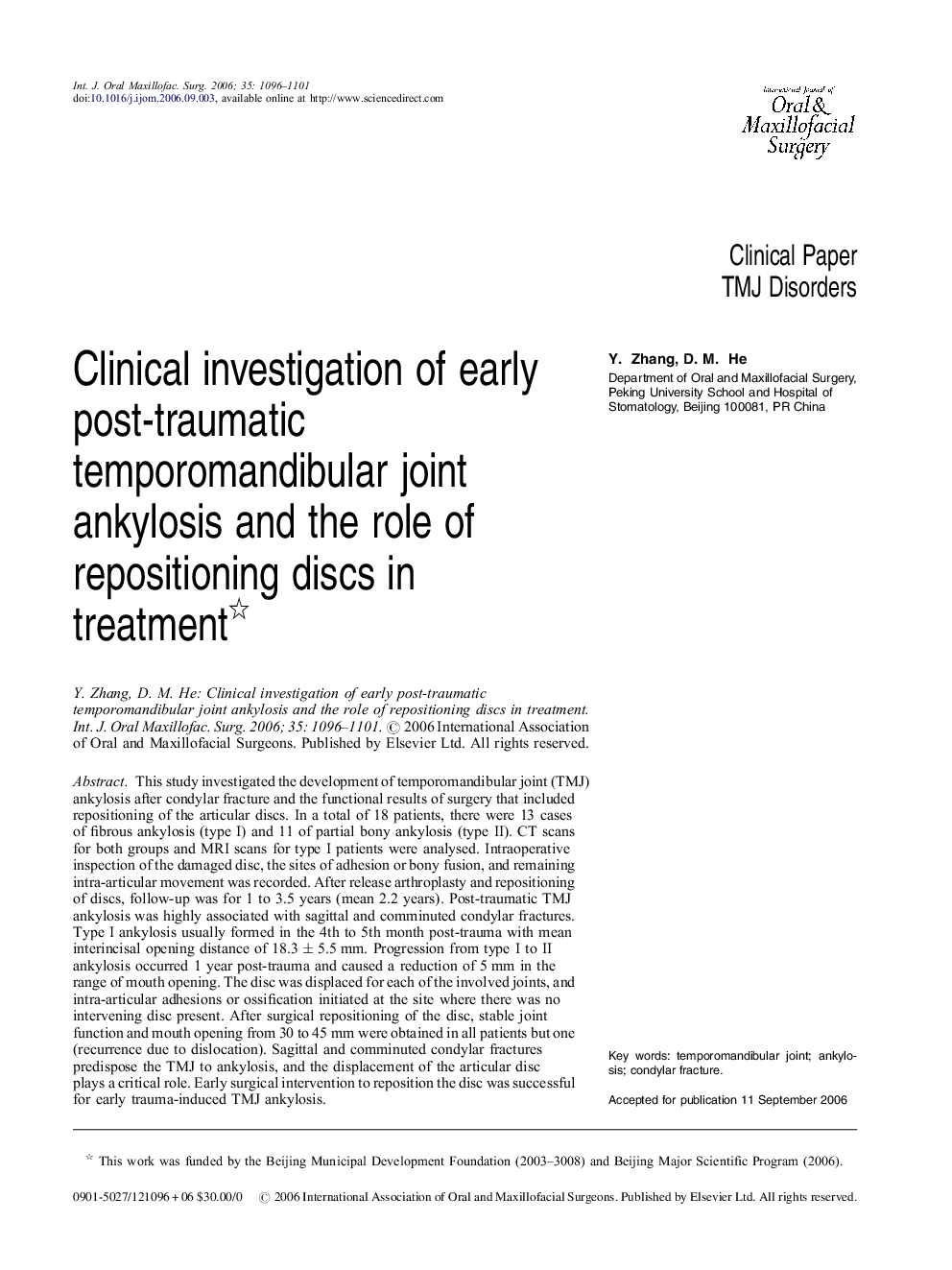| Article ID | Journal | Published Year | Pages | File Type |
|---|---|---|---|---|
| 3134932 | International Journal of Oral and Maxillofacial Surgery | 2006 | 6 Pages |
This study investigated the development of temporomandibular joint (TMJ) ankylosis after condylar fracture and the functional results of surgery that included repositioning of the articular discs. In a total of 18 patients, there were 13 cases of fibrous ankylosis (type I) and 11 of partial bony ankylosis (type II). CT scans for both groups and MRI scans for type I patients were analysed. Intraoperative inspection of the damaged disc, the sites of adhesion or bony fusion, and remaining intra-articular movement was recorded. After release arthroplasty and repositioning of discs, follow-up was for 1 to 3.5 years (mean 2.2 years). Post-traumatic TMJ ankylosis was highly associated with sagittal and comminuted condylar fractures. Type I ankylosis usually formed in the 4th to 5th month post-trauma with mean interincisal opening distance of 18.3 ± 5.5 mm. Progression from type I to II ankylosis occurred 1 year post-trauma and caused a reduction of 5 mm in the range of mouth opening. The disc was displaced for each of the involved joints, and intra-articular adhesions or ossification initiated at the site where there was no intervening disc present. After surgical repositioning of the disc, stable joint function and mouth opening from 30 to 45 mm were obtained in all patients but one (recurrence due to dislocation). Sagittal and comminuted condylar fractures predispose the TMJ to ankylosis, and the displacement of the articular disc plays a critical role. Early surgical intervention to reposition the disc was successful for early trauma-induced TMJ ankylosis.
